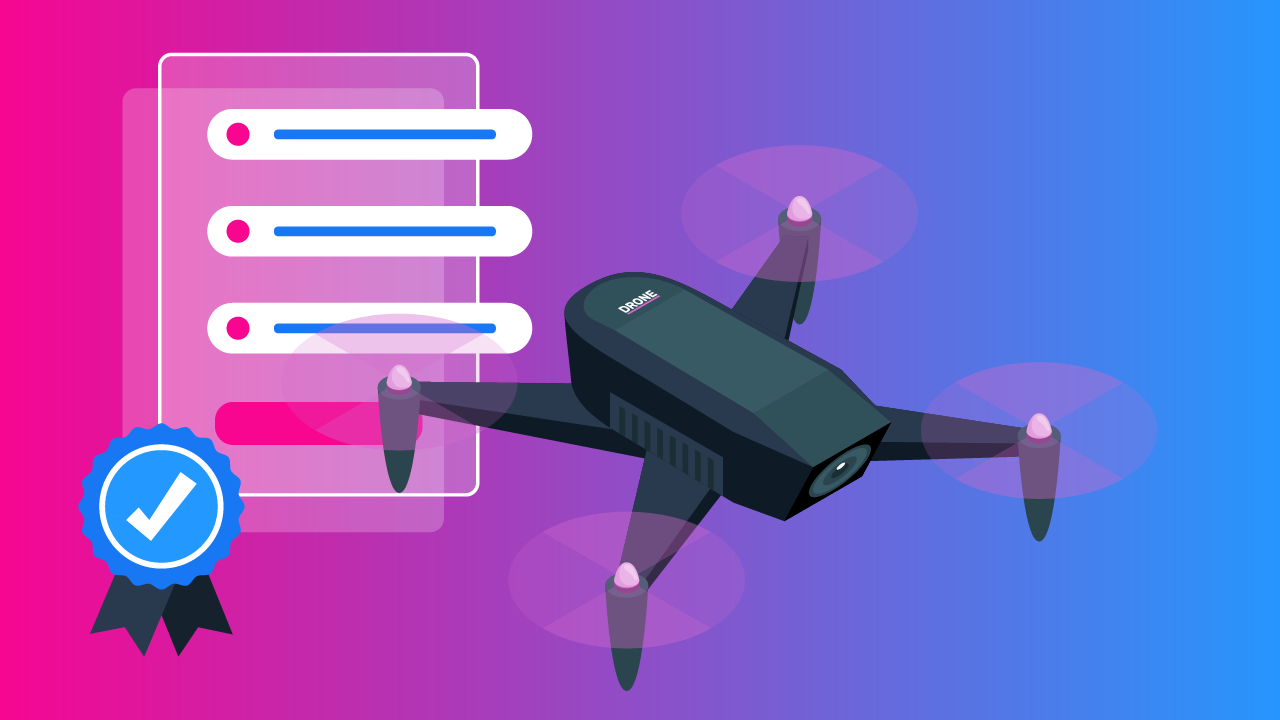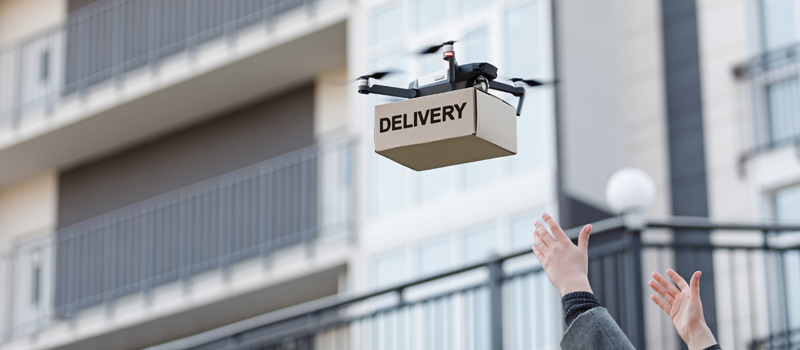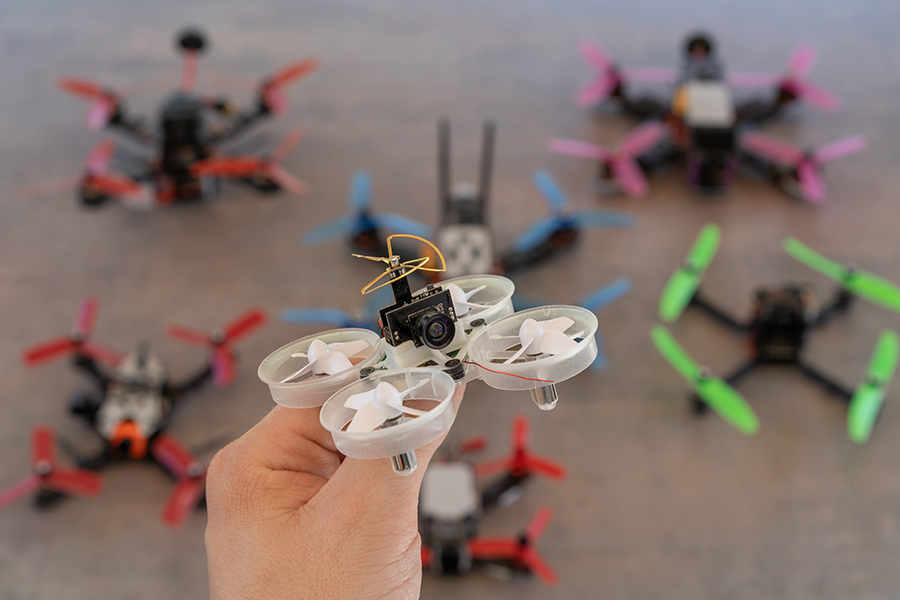Drones have become a mainstream gadget for photography enthusiasts, tech hobbyists, and businesses.
The excitement of flying and the ability to capture breathtaking footage have attracted many new people to the hobby.
If you are new to drones, the numerous choices initially seem intimidating.
We’re here to help.
In this article, we’ll explore the best drones on the market for beginners and the information you need to get started with these amazing machines.
Key Takeaways
- Best Budget Drone: The DJI Mini 2 SE offers a balance of ease of use, budget, and good camera quality.
- Best Drone for Beginners: The Ryze Tello is great for learning the basics while still having features like auto takeoff and landing.
- Best for Affordable Image Quality: The DJI Mini 3 offers more advanced features, better video quality, and longer flight times, serving as an excellent option for beginners looking to enhance their drone experience with higher image quality.
- Higher-End Drones for Beginners: The list includes options like the Autel EVO Nano+ and DJI Mini 4 Pro with a more professional feature list while still being user-friendly for beginners. The DJI Avata is a great option for those interested in FPV flying.
Top 6 Drones for Beginners
When choosing drones for beginners, we considered factors such as user-friendliness, durability, brand, and affordability.
Here are our top six recommendations.
Best Budget Beginner Drone – DJI Mini 2 SE

Why It’s Great for Beginners
- Its size and simplicity make it ideal for first-time flyers.
- It’s budget-friendly with great functions.
- DJI’s technology ensures a smooth flying experience.
- Beginner-friendly with the DJI FLY app, with clear and easy-to-follow tutorials to get started flying.
Enroll in our free DJI Mini Deep Dive Course if you choose the DJI Mini 2 SE.
Pros
-
Budget-friendly.
-
Lightweight and compact.
-
Easy to control.
-
Good camera quality for the price.
-
Up to 38kph wind resistance (Level 5).
-
Take off and land with one tap.
-
Under 249g for regulation.
-
Quickshot modes.
Cons
-
No forward obstacle avoidance system.
-
No 4K video.
-
Lower video recording bit rate than the other DJI Drones in the list.
Features
- Compact size, Under 249g.
- 1/2.3-inch CMOS camera.
- 3-axis gimbal.
- 2.7k up to 30fps with 3x digital zoom and 1080p up to 60fps with 4x digital Zoom.
- MicroSD cards are used for storage.
- MP4 Video format at 40Mbps.
- 12mp JPEG and RAW photos.
- 31-minute Max flight time.
- 10km video transmission.
- Smart RTH, Low Battery RTH, and Failsafe RTH.
- Stable hovering with a combination of GNSS and downward vision sensors.
- Optional propeller guards are available.
Most Affordable Beginner Drone – DJI Ryze Tech Tello

Why It’s Great for Beginners
- The Tello is perfect for those on a tight budget and is a great way to learn the basics.
- It is highly affordable and great fun for indoor flying.
- It’s the best drone to learn to fly without breaking the bank and worrying about crashing.
Pros
-
Extremely affordable.
-
Ideal for indoor flying.
-
Extraordinarily light and safe.
-
Auto take-off and landing functions.
-
Auto aerial stunts function.
-
Programmable for educational purposes.
Cons
-
Limited range and camera capabilities.
-
Isn’t ideal to fly outside if there is wind.
-
Using a phone as a controller is a con for some people.
-
No controller included.
-
Only 720p Video.
Features
- Up to 13-minute flight time.
- 100m flight distance and 30m max flight height.
- 720p camera.
- 5mp photos.
- Smartphone controls.
- Controller compatibility with the customized Gamesir T1D.
- “Throw and Go” function.
- 8D flips function for aerial stunts.
- Bounce mode flies up and down from your hand automatically.
- Auto take-off and landing.
- Downward vision positioning sensors.
- EZ shots function for short videos.
- Programmable for educational coding.
- Electronic image stabilization.
The Best Step-Up for Beginners – DJI Mini 3

Why It’s Great for Beginners
- The DJI Mini 3 perfectly balances performance, portability, and budget.
- Its user-friendly interface and extended flight time make it ideal for beginners who want a drone that’s easy to handle yet capable of capturing higher-quality images.
Enroll in our free DJI Mini 3 Pro Deep Dive Course if you choose the DJI Mini 3.
Pros
-
Excellent camera quality for its size.
-
Optional extended batteries are available.
-
It’s user-friendly for beginners and has many functions.
-
Optional propeller guard available.
-
Optional, more advanced DJI RC remote with integrated display available.
-
Longer flight time.
Cons
-
It is more expensive than the first two drones on the list.
-
No forward obstacle avoidance system.
Features
- 1/1.3-inch CMOS sensor with dual native ISO.
- 4K HDR video.
- 3-axis gimbal.
- 2X Digital Zoom at 4K, 3X Digital Zoom at 2.7K and 4X Digital Zoom at FHD.
- True vertical shooting.
- 38 kph wind resistance.
- Up to 38-minute flight time on the standard battery.
- Under 249g.
- Uses microSD cards for storage.
- MP4 video format at 100Mbps.
- 12MP & 48MP JPEG and RAW photos.
- 10km video transmission.
- Smart RTH, low battery RTH, and failsafe RTH.
- Stable hovering with a combination of GNSS and downward vision sensors.
Best Alternative to the DJI Mini 3 – Autel EVO Nano+

Why It’s Great for Beginners
- The EVO Nano+ is an excellent option for beginners who want a drone with advanced imaging capabilities in a compact form.
- Its safety features and ease of use make it a top choice for newcomers.
- Options to choose different colors and record sound from the ground to narrate your drone learning experience.
Pros
-
Compact and portable.
-
Offers impressive camera capabilities.
-
Includes forward, backward, and downward obstacle avoidance.
-
Sound record from the base station.
-
Best non-DJI alternative in the price range.
-
Range of colors to choose from.
Cons
-
It can be more expensive than the other beginner drones.
-
The app is less refined compared to DJI.
Features
- 4K camera with a 1/1.28-inch sensor.
- 4K HDR video.
- 3-axis gimbal.
- 28-minute flight time.
- Capable of 50MP photos.
- Uses microSD cards for storage.
- MP4 video format at 100Mbps.
- Under 250g.
- Forward, backward, and downward vision sensors.
- 10km video transmission.
Best Feature-Packed Beginner Drone – DJI Mini 4 Pro

Why It’s Great for Beginners
- The Mini 4 Pro offers advanced features and user-friendly controls while having professional video and photo features from higher-end drones.
- Its obstacle-sensing technology and precise positioning make it a safe choice for beginners serious about drone photography.
- This drone is still user-friendly for beginners despite its many professional features.
Enroll in our free DJI Mini 4 Pro Deep Dive Course if you choose the DJI Mini 4 Pro.
Pros
-
The best photo and video quality in the list.
-
It is one of the latest drones, thus more extended support.
-
It is one of the latest drones, thus more extended support.
-
GPS and GLONASS support for accurate positioning.
-
360-degree omnidirectional obstacle sensing.
-
Up to 20 km video transmission.
-
10-bit D-Log for exceptional video quality.
-
Active track 360.
-
Optional plus battery extends flight time to 45 minutes.
-
Waypoint flights.
-
Advanced Return to Home
Cons
-
It’s one of the most expensive drones on our list.
-
Crashes are more costly.
-
Pilots may become too reliant on all the sensors. While the sensors are a massive benefit, pilots should not entirely rely on them as they have limitations.
Features
- 1/1.3-inch CMOS camera.
- 4K 60fps HDR true vertical shooting and 4K 100fps.
- 10-bit D-Log M.
- 48MP RAW photos.
- Uses microSD cards for storage.
- Up to 34 minutes of flight time with standard battery.
- Up to 20 km FHD video transmission.
- Omnidirectional obstacle sensing.
- Advanced Pilot Assistance Systems (APAS).
- Active track 360.
- Under 249g.
The Best Beginner FPV Drone – DJI Avata

Why It’s Great for Beginners
- The DJI Avata offers an exciting FPV flying experience, which is quite engaging for beginners.
- Its user-friendly controls and safety features make it an excellent choice for those exploring FPV drone flying.
- The Avata has more accessible modes like normal mode to start practicing. You can work up to sport and manual mode while still having a dedicated emergency brake function for when you make mistakes.
Enroll in our free DJI AVATA Deep Dive Course if you choose the DJI AVATA.
Pros
-
Intuitive motion controller.
-
Head tracking.
-
Built-in propeller guards.
-
Well-built and rugged design.
-
Access to easily replaceable parts that are not expensive.
-
Suitable for indoor and outdoor flights.
-
It is one of the most affordable FPV drone packages.
-
It is one of the only FPV Drones with a dedicated emergency brake function.
-
It also works with the DJI FPV Controller.
-
Good flight time for an FPV Drone.
-
It has a good DJI FPV flight simulator app to practice with the FPV Goggles.
Cons
-
Shorter flight time than regular drones.
-
It is one of the more expensive drones on our list.
-
Does not come with a traditional flight controller. We recommend you purchase one.
-
It is approximately 410g, so you must register it with the FAA.
-
The extra batteries are pricey.
-
As per FAA regulations, you need a spotter while flying with FPV Goggles.
Features
- Immersive flight experience with FPV (First-Person View).
- 1/1.7-inch CMOS Camera Sensor.
- 4K up to 60fps and 2.7K and HD up to 120fps.
- Built-in RockSteady and Horizon Steady Stabilization.
- MP4 video format at 150Mbps.
- Uses microSD cards for storage.
- It also has 20GB of Internal Storage.
- Built-in Propeller Guard.
- Ocusync 3+ Low-Latency HD Transmission up to 10km range.
- It works with a motion controller, Joystick, or regular RC controller.
- Up to 18 minutes of flight time, depending on your flight style and mode.
- Downward Obstacle Sensors.
- Built-in GPS + Galileo + BeiDou GNSS Sensors.
What Makes a Drone Beginner-Friendly?
Ease of flight, durability to withstand accidents, and affordability are key characteristics of beginner-friendly drones.
Here are the key factors to consider.
Difficulty
Look for drones equipped with beginner modes, such as the DJI Mavic 2 SE and Mavic 3. These typically include auto takeoff and landing functions as well as automated flight paths.
It’s similar to having training wheels on a bicycle – they help with the learning process!
Durability
Since beginners may encounter a few crashes while learning, choosing a drone, such as the Ryze Tello or DJI Avata, that can withstand impact and continue flying is essential.
Affordability
You don’t need to spend a fortune on your first drone. Look for a reasonably priced one like the DJI Mavic 2 SE, but it still has the cool features you need.
Safety Features
Considering drones equipped with obstacle sensors and an automatic return-to-home function.
These features can help prevent accidents and ensure your drone doesn’t get lost, such as the DJI Mavic 4 Pro with omnidirectional sensors.
Why We Prioritize Reputable Drone Brands
When it comes to drones, there are various choices ranging from well-known brands to unbranded or generic models.
While it may be tempting to consider drones due to their prices, our guide exclusively focuses on drones from reputable brands for several essential reasons.
Reliable Quality
Big names like DJI and Autel have gained popularity because they manufacture drones that perform well and have a good lifespan, thanks to their emphasis on quality and taking customer feedback into account.
Reliable Support
Having customer support in case of any issues is crucial. Major brands usually offer services, warranties, and repair options.
Convenient Upgrades
With established brands, finding parts or exciting accessories is effortless. This convenience might not always be guaranteed with off-brand drones.
Long-Term Value
Popular drones often receive updates that enhance their performance over time, and they generally retain their value if you decide to sell them.
Drone Regulations for Beginners
Flying a drone also requires you to understand and comply with the regulations that govern drone use.
The regulations exist to ensure everyone’s privacy and security. Let’s review the basics of what all drone users should be aware of.
Overview of Rules for All Drone Operators
- Stay below 400 feet at all times.
- Get authorization before flying in controlled airspace.
- Be physically and mentally able to fly a Drone/sUAS.
- Always fly within a visual line of sight, meaning you or your observer must always have eyes on the drone.
- The drone must weigh under 55 lbs (25 Kg).
- Always need to give way and yield to manned aircraft.
- You cannot fly your drone recklessly or carelessly.
The rest of the regulations differ depending on whether you fly for fun or work.
Go to our interactive wiki to determine what laws you must follow, or see the basics below.
Rules for Recreational Flyers
Step 1
If you are flying for fun, you are flying under 44809 rules and must take the TRUST exam to fly legally.
Step 2
If your drone weighs more than 250 grams, it must be registered with the FAA.
Step 3
You must follow the safety guidelines of a Community-Based Organization (CBO).
Step 4
Take our free 2-hour course that walks you through everything you need to know to fly legally for fun under the 44809 rules.
Drone Flight Simulators

When it comes to learning how to fly drones, it can be quite challenging at first. For beginners, we recommend utilizing flight simulators as a step in your drone journey.
Advantages of Using Simulators
Risk-Free Learning
Simulators provide a risk-free environment for beginners to practice flying without any concerns about damaging a drone.
It’s particularly beneficial when mastering maneuvers or operating drones in challenging scenarios.
Mastering the Controls
Flight simulators help users grasp the controls for smooth and controlled flights.
Realistic Weather and Environment Simulation
Most simulators offer a variety of settings, such as wind, rain, or different landscapes. These features enable pilots to enhance drone handling skills under many conditions.
Cost Savings
By honing your skills in a simulator, you decrease the likelihood of crashing your drone, ultimately saving you repair expenses.
Popular Drone Simulators
DJI Flight Simulator
This simulator offers a good flying experience with various DJI models. It’s excellent for beginners.
Liftoff Drone Racing
This simulator focuses on drone racing and offers highly realistic flight physics.
AeroFly RC 7
With various models, including drones, helicopters, and planes, AeroFly RC 7 receives praise for its realistic flight physics and detailed scenery, appealing to those interested in both drone and traditional RC aircraft piloting.
RealFlight 9
A favorite among RC hobbyists, RealFlight 9 provides a range of aircraft options, including drones. Its realistic physics engine, environments, and detailed aircraft models make it a top pick for those seeking a flight simulation experience.
DRL (Drone Racing League) Simulator
Designed specifically for drone racers, this simulator delivers the experience of piloting high-speed racing drones with realism.
Tips for Using Simulators
Start Simple
Start by familiarizing yourself with the controls before moving on to advanced maneuvers. This will help you build a foundation of skills and increase your confidence.
Regular Practice
Use simulators as part of your training routine. Regular practice will help refine your flying abilities and enhance your proficiency.
Try Different Scenarios
Experiment with different types of models and weather settings to gain a better understanding of how they perform under various flying conditions. This will broaden your knowledge and prepare you for challenges while operating a drone.
Training Tools Beyond Simulators
Online Tutorials and Courses
Online tutorials and courses can be beneficial for beginners. You can find many resources, including our library of drone courses, some of which are free.
Local Drone Clubs
Joining a drone club or workshop can provide hands-on training and the opportunity to learn from pilots.
Incorporating drone simulators and other training tools into your learning process can greatly improve your skills and confidence as a beginner pilot. These tools make flying safer and more enjoyable while preparing you for a wide range of flying scenarios.
Conclusion
User-friendly, durable, and safe drones are great picks when starting out.
All the drones on the list besides the DJI Avata are sub 250g drones that will not need registration, making it a more straightforward process for beginners who then only need to take the TRUST exam.
One thing’s for sure: any one of the drones on our list will get you hooked!



